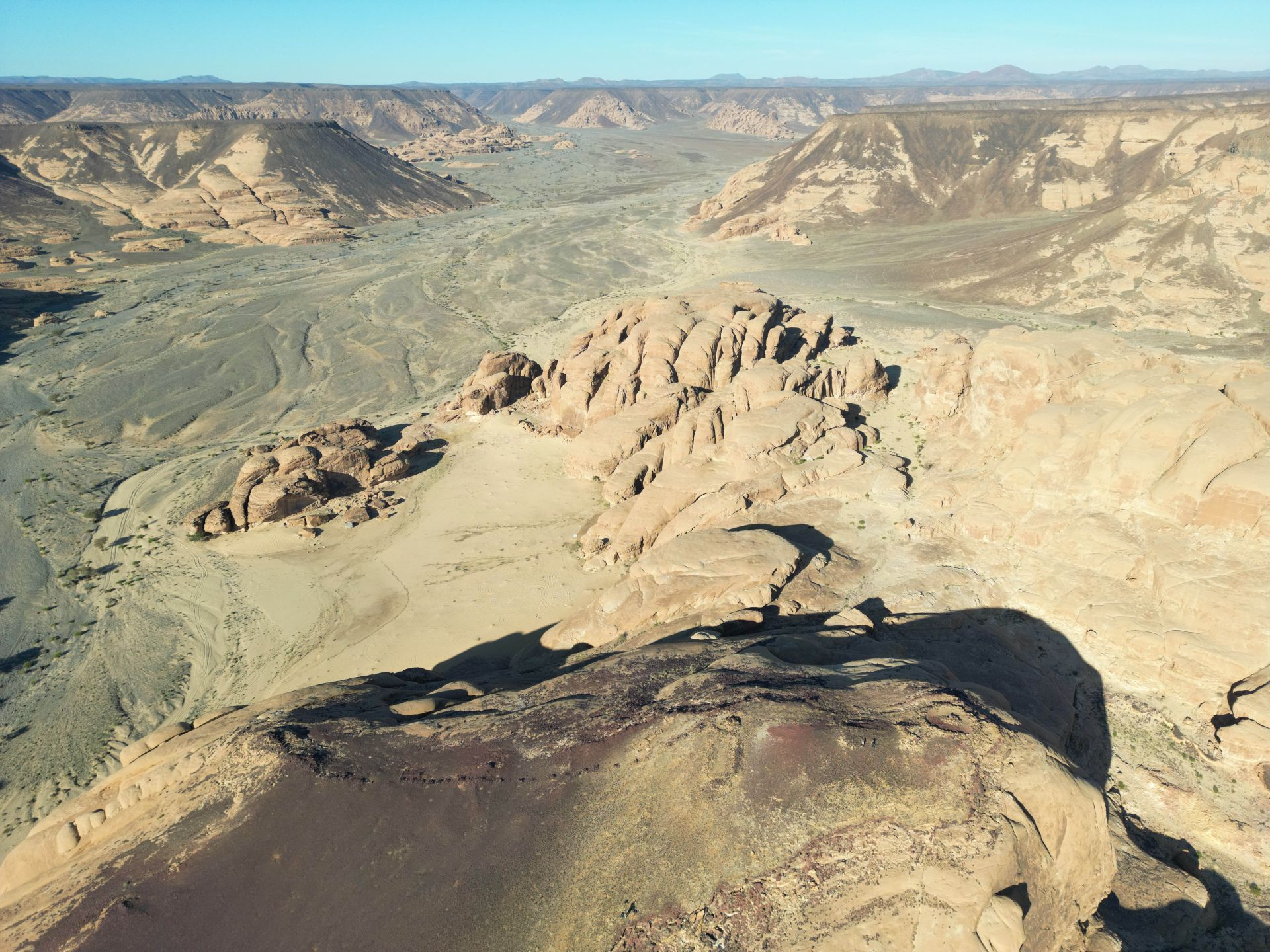Listen to this story
The ancient town at Hegra, just outside the modern town of Al-Ula in northern Saudi Arabia, is famous for its Nabataean monuments carved directly into the red rock, many ornately decorated and complete with inscriptions. Similar in style to its more famous Nabataean sibling, Petra, in Jordan, Hegra only recently received a comparable level of attention from archaeologists. When it did, the finds were spectacular. In 2008, excavations began on tombs that still contained not only bodies but also the ceramics and jewelry buried with them (astonishingly undisturbed, unlike the tombs at Petra).
Hegra became Saudi’s first UNESCO World Heritage Site and made headlines around the world with the exhibition “Al-Ula: Wonder of Arabia,” which has been on tour in major world museums since 2019. I saw it in Paris in 2020 and was blown away by the stunning photographs and ancient history.
On my return to London, I was greeted by posters on the tube telling me to “Visit Al-Ula,” with the same beautiful photographs. It was all part of Saudi Arabia’s Vision 2030 to “transform” the country, with tourism, including heritage tourism, as one of the elements of a more diversified economy. To facilitate this budding industry, tourist visas are available online, women don’t need a male guardian or a head covering, a new cadre of tour guides have been trained up and hotels and other infrastructure have been built — all in just three years. Create a free account to continue reading Already a New Lines member? Log in here Create an account to access exclusive content.



